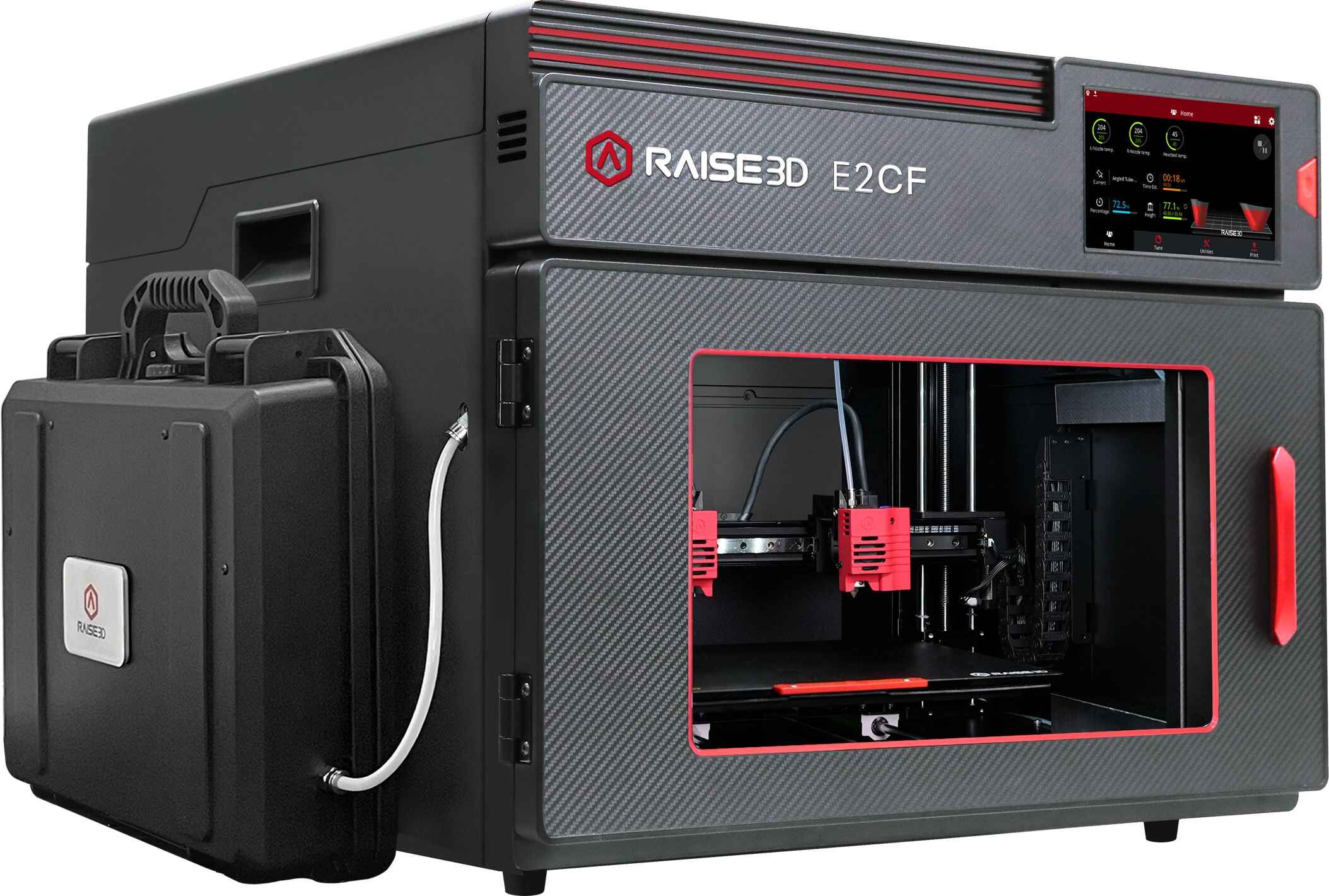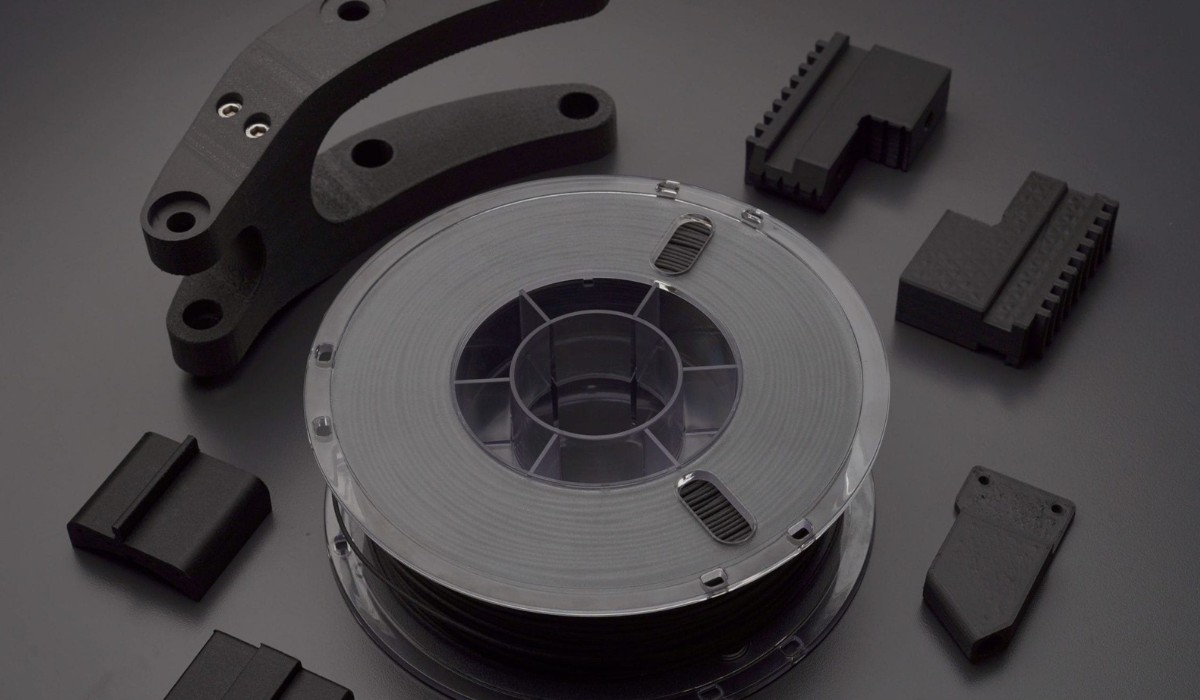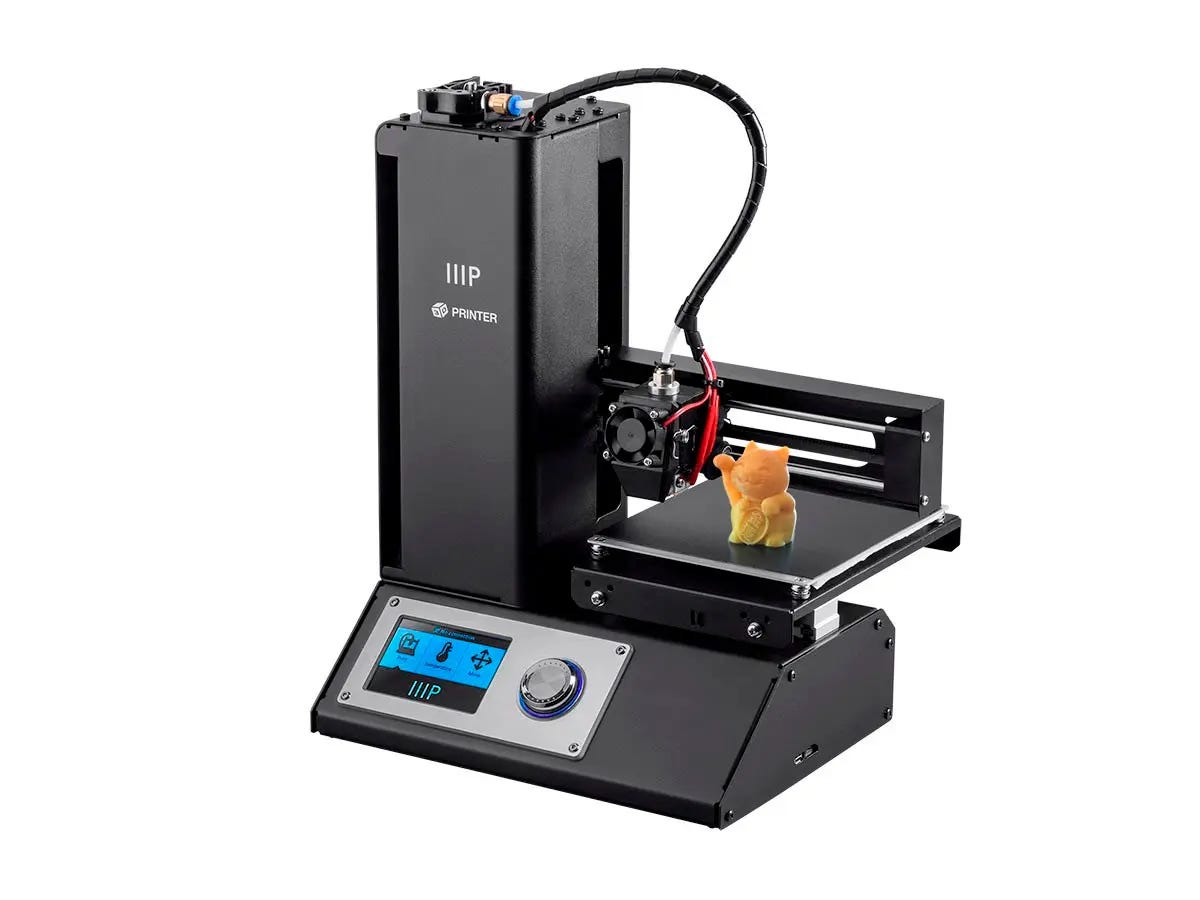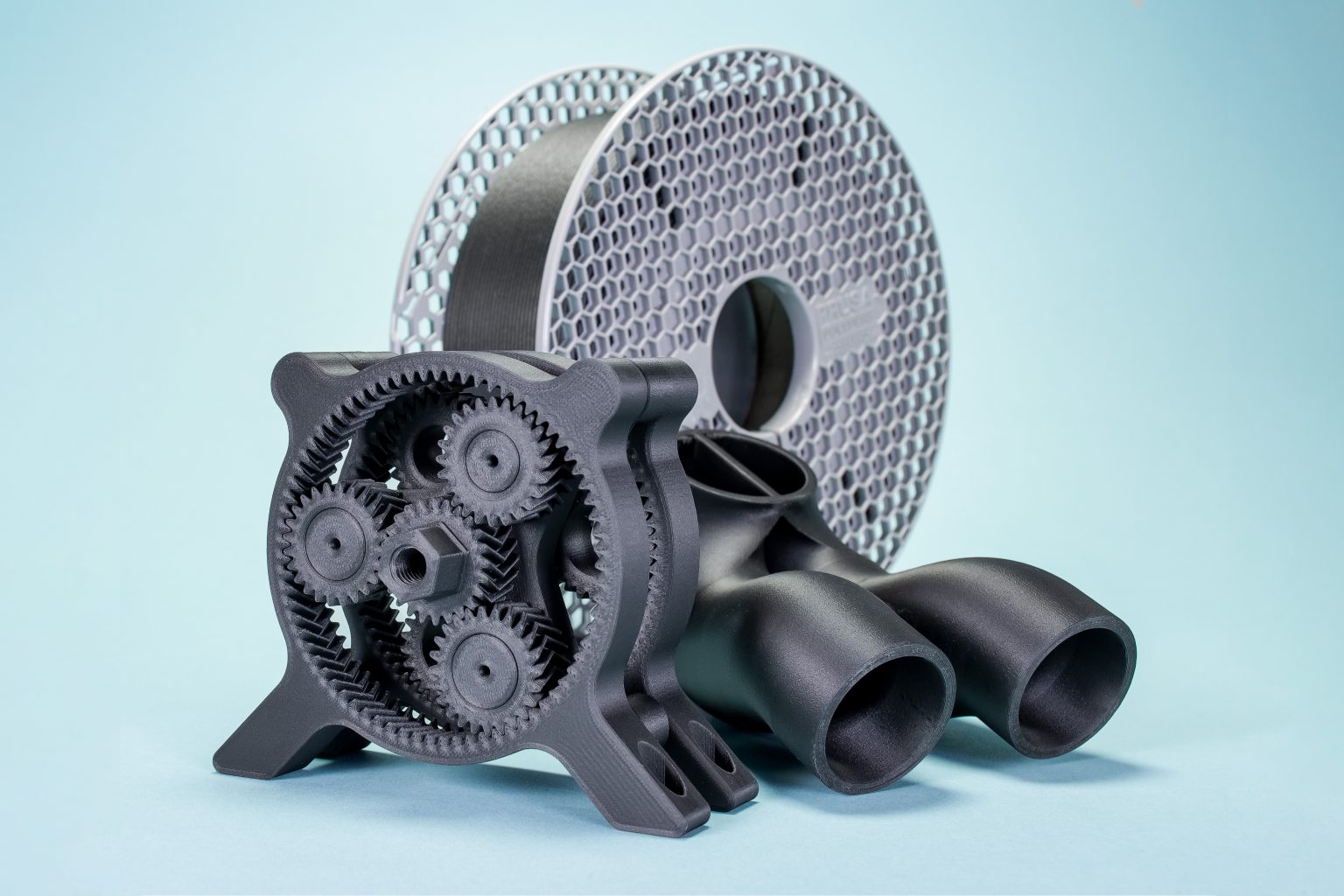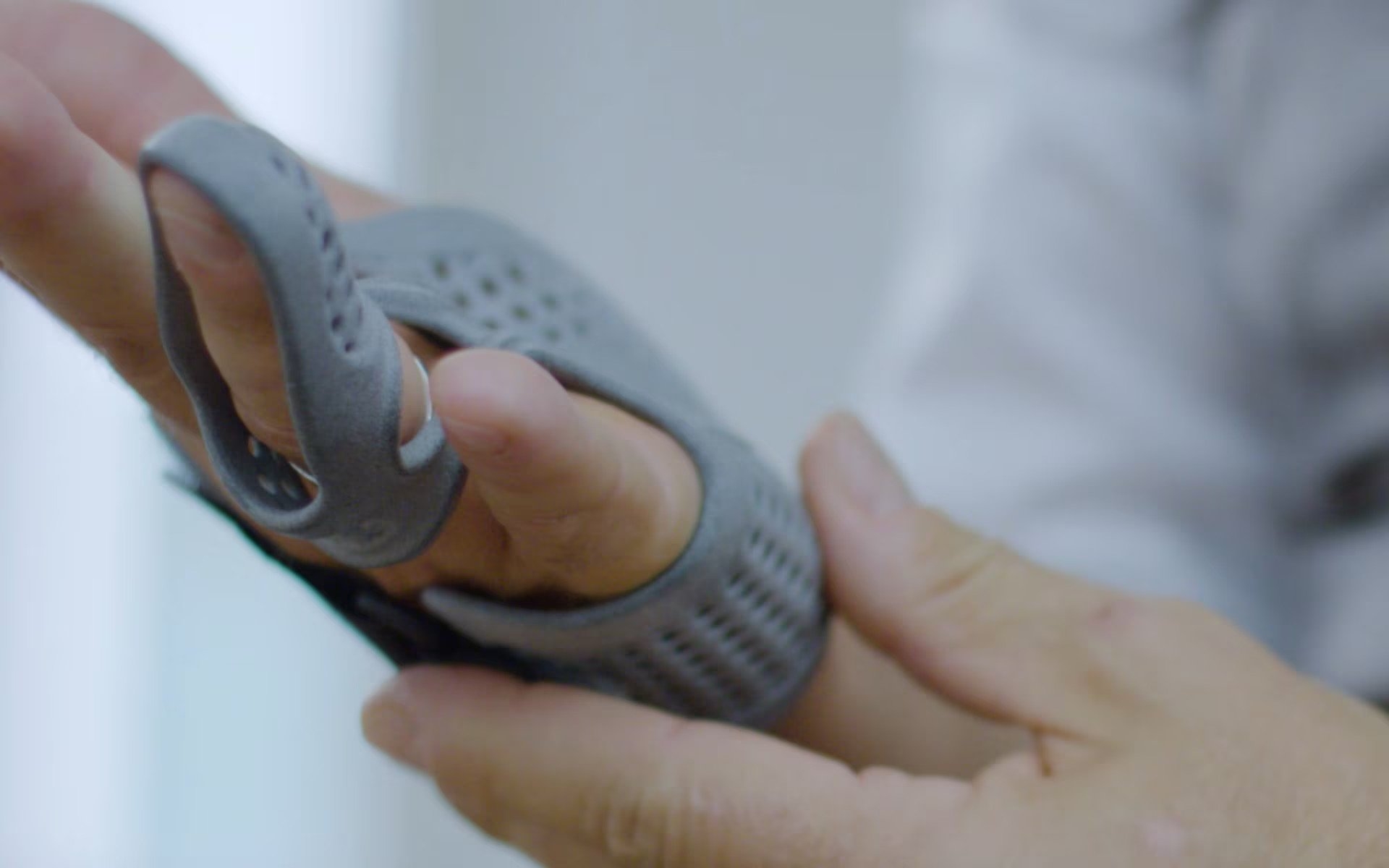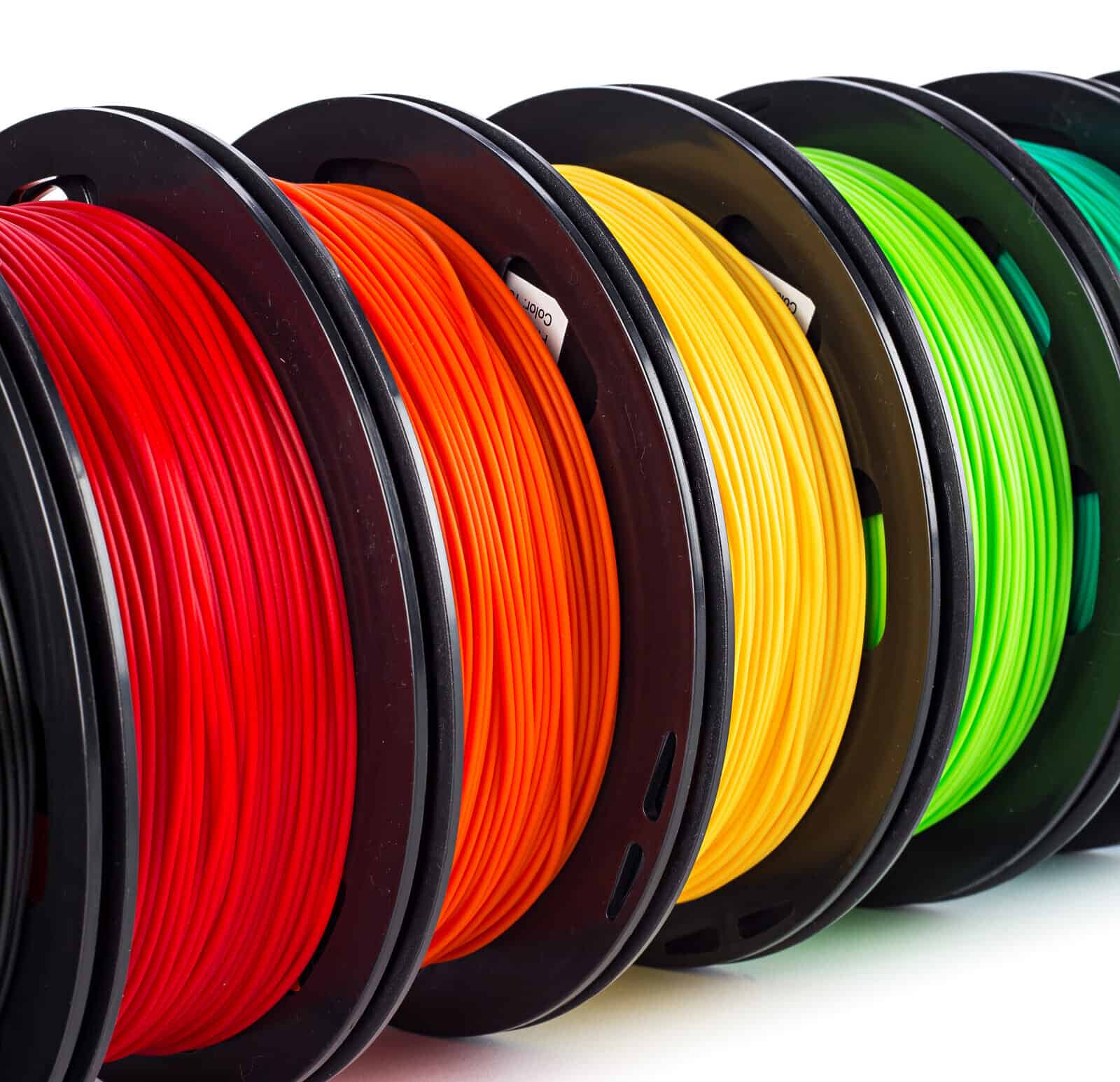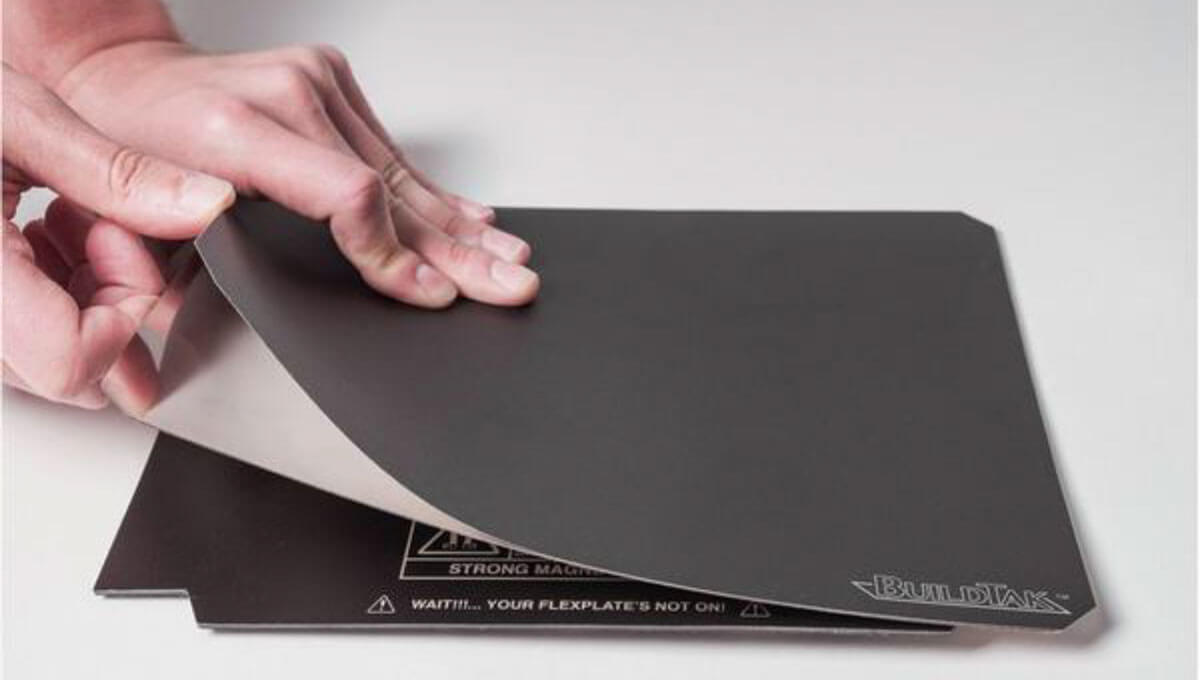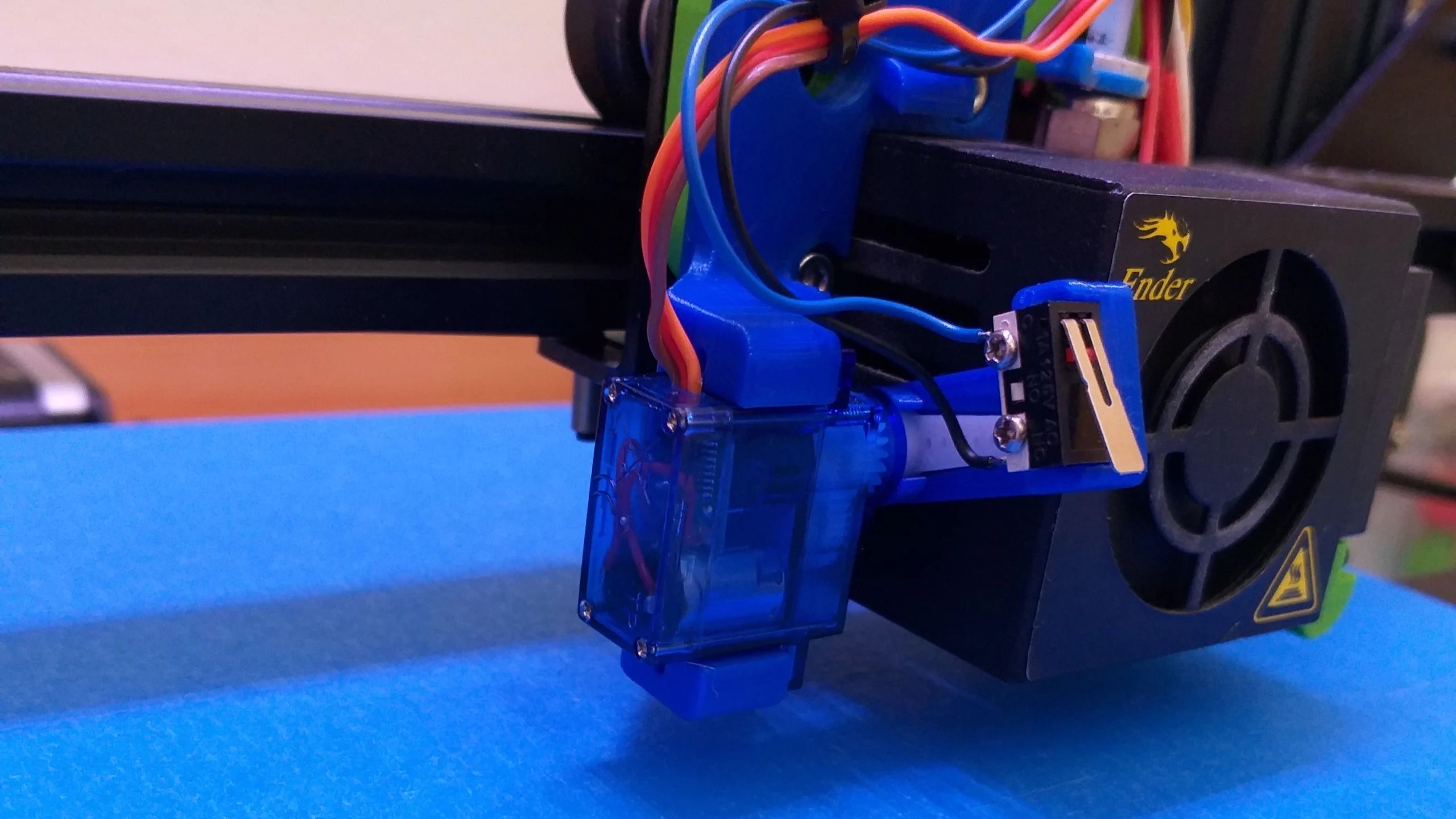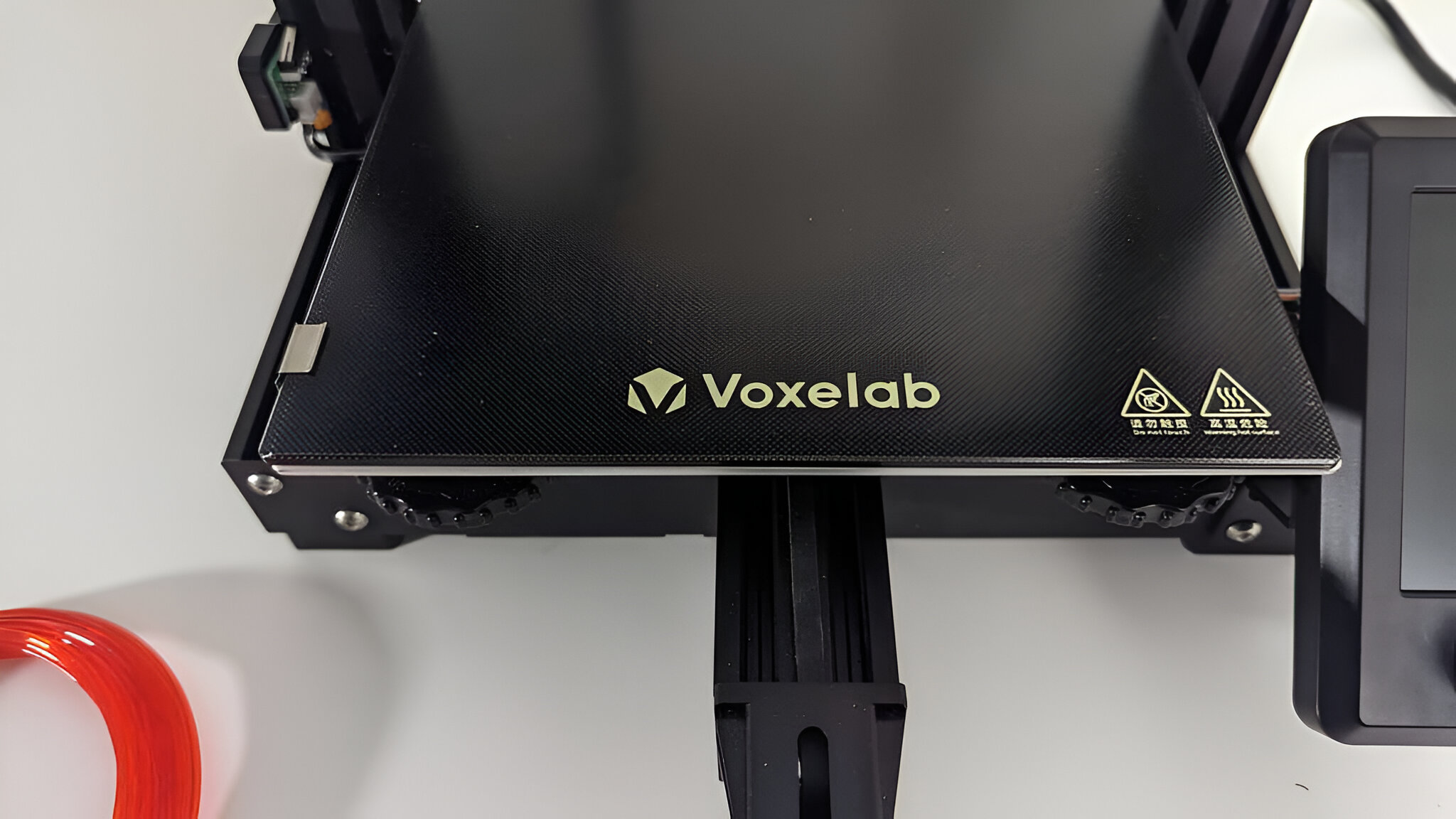Introduction
Welcome to the world of 3D printing, where innovation knows no bounds. In recent years, 3D printers have revolutionized various industries, from manufacturing and healthcare to fashion and architecture. One area where 3D printing technology has made remarkable advancements is in printing with carbon fiber. This powerful and versatile material has become a game-changer in the world of additive manufacturing.
Carbon fiber is a composite material that consists of carbon fibers infused with a polymer resin. This combination results in a material that is incredibly strong, lightweight, and durable. Its exceptional mechanical properties, such as high tensile strength and stiffness, make it a preferred choice in industries where strength-to-weight ratio is critical.
One of the main benefits of using carbon fiber in 3D printing is its ability to produce lightweight yet robust components. This is particularly advantageous in industries like aerospace and automotive, where reducing weight while maintaining structural integrity is paramount for fuel efficiency and performance. Carbon fiber parts also exhibit excellent resistance to corrosion, high temperatures, and wear, making them ideal for demanding applications.
However, printing with carbon fiber brings its fair share of challenges. The unique properties of the material require specialized equipment and expertise to ensure successful prints. Carbon fiber filaments are more abrasive than traditional materials, which can lead to wear on the printer nozzle. Additionally, the high thermal conductivity of carbon fiber can cause warping and delamination during the printing process.
Despite these challenges, several 3D printers have emerged that are capable of effectively printing with carbon fiber. These printers combine advanced technology with innovative design features to overcome the obstacles associated with printing this remarkable material. Let’s explore some of the leading 3D printers that can handle carbon fiber filaments.
What is Carbon Fiber?
Before diving into the world of 3D printers that can handle carbon fiber, it’s crucial to understand what carbon fiber is and why it’s gaining popularity in various industries.
Carbon fiber is a lightweight, high-strength material that is composed of thin strands of carbon atoms tightly bound together in a repeating hexagonal pattern. These fibers are extremely strong and have a high tensile strength, meaning they can resist pulling forces without breaking. This unique combination of strength and lightness has made carbon fiber a go-to material in industries that require high-performance and lightweight components.
To create carbon fiber, the carbon atoms are first extracted from a raw material source, such as petroleum-based polymers or natural fibers like rayon. These extracted carbon atoms are then processed and heated to extremely high temperatures in a controlled environment. This process, known as carbonization or pyrolysis, removes any impurities and aligns the carbon atoms into a crystalline structure.
The resulting carbon fibers are then combined with a polymer matrix, usually epoxy resin, to create a composite material. This composite structure combines the strength and flexibility of the carbon fibers with the molding properties of the resin. The carbon fibers provide the material’s mechanical properties, while the resin holds everything together and protects the fibers from damage and environmental factors.
Carbon fiber offers several advantages over traditional materials like steel or aluminum. Firstly, it has an exceptional strength-to-weight ratio, meaning it is incredibly strong despite being lightweight. This makes carbon fiber components ideal for applications where weight reduction is critical, such as aerospace, automotive, and sports equipment.
In addition to its strength, carbon fiber is also highly resistant to corrosion, chemicals, and fatigue. It can withstand extreme temperatures and is an excellent conductor of electricity. These properties make it an attractive choice for various industries, including marine, construction, and renewable energy.
However, carbon fiber does come with some challenges. The production process is complex and requires specialized equipment and expertise. It is also relatively expensive compared to traditional materials, which limits its widespread adoption in some industries. Nonetheless, the unique properties of carbon fiber make it a highly sought-after material, and the advancements in 3D printing technology have made it more accessible for manufacturing high-performance components.
Benefits of Carbon Fiber
Carbon fiber offers a multitude of benefits that have made it an increasingly popular material in various industries. From aerospace and automotive to sports and consumer goods, the advantages of using carbon fiber are hard to ignore.
One of the key benefits of carbon fiber is its remarkable strength-to-weight ratio. It is significantly lighter than many traditional materials, such as steel or aluminum, while still maintaining exceptional strength. This lightness is advantageous in industries where weight reduction is critical, as it enhances fuel efficiency, performance, and overall functionality.
In addition to its lightweight nature, carbon fiber is known for its outstanding durability and robustness. It possesses high tensile strength, meaning it can resist stretching or breaking under tension. This property makes carbon fiber components ideal for applications that undergo intense stress or need to withstand substantial forces.
Another advantage of carbon fiber is its excellent resistance to corrosion. Unlike metals that can rust or deteriorate over time, carbon fiber is highly resistant to environmental factors, chemicals, and moisture. This resistance makes it a preferred choice in industries such as marine, where exposure to water and humidity is common.
Furthermore, carbon fiber exhibits impressive thermal properties, allowing it to withstand extreme temperatures. It has low thermal expansion, meaning it expands and contracts minimally when exposed to heat or cold. This thermal stability makes carbon fiber components well-suited for applications that require resistance to heat, such as aerospace and automotive industries.
Moreover, carbon fiber has exceptional fatigue resistance, meaning it can endure repeated or cyclic loading without significant degradation. This property makes it ideal for components that undergo continuous stress and strain, such as aircraft structures or sports equipment. It ensures longevity and reliability in demanding situations.
Additionally, carbon fiber is an excellent conductor of electricity, allowing it to be used in industries that require electrical conductivity or electromagnetic shielding. It is widely utilized in applications such as aerospace, electronics, and telecommunications.
Finally, carbon fiber offers unparalleled design freedom and versatility. It can be easily molded into complex shapes and customized for specific requirements. This flexibility in design, combined with its exceptional performance, enables engineers and designers to push the boundaries of innovation and create groundbreaking products.
Overall, the benefits of carbon fiber, including its strength, durability, resistance to corrosion and fatigue, thermal stability, electrical conductivity, and design versatility, have positioned it as a leading material in various industries. Its unique properties continue to drive advancements in both traditional manufacturing and additive manufacturing through 3D printing.
Challenges of Printing Carbon Fiber
In spite of the numerous advantages of carbon fiber, printing with this advanced material poses certain challenges that need to be addressed for successful manufacturing. These challenges are primarily related to the properties of carbon fiber and the specialized requirements it demands.
One major challenge in printing carbon fiber is the abrasive nature of the material. Carbon fiber filaments contain tiny, hard particles that can cause significant wear on the printer’s nozzle. The continuous contact between the filament and the nozzle can lead to nozzle degradation over time, affecting print quality and accuracy. It necessitates the use of hardened nozzles or other protective measures to withstand the abrasive effect of carbon fiber filaments.
Another challenge is the high thermal conductivity of carbon fiber. During the printing process, excessive heat can be generated due to the conductivity of the material, which may lead to warping or delamination of the printed object. Maintaining precise temperature control throughout the printing process is essential to mitigate these issues. Specialized 3D printers are equipped with advanced heating systems and temperature-regulating mechanisms to overcome these challenges.
Furthermore, carbon fiber filaments can be more prone to moisture absorption compared to other printer materials. Moisture absorption can lead to filament degradation, resulting in poor print quality and reduced mechanical properties. It is crucial to store carbon fiber filaments in a humidity-controlled environment and ensure proper filament handling and drying techniques to prevent moisture-related issues.
Due to the unique properties of carbon fiber, printing with this material often requires specific printing parameters and settings. Achieving optimal layer adhesion and surface finish may require adjustments to the printing speed, temperature, and cooling settings. Fine-tuning these parameters is necessary to ensure the desired quality and strength of the printed parts.
Moreover, the cost of carbon fiber is relatively higher compared to traditional materials, which can limit its accessibility. The advanced materials and technologies required for printing with carbon fiber contribute to the overall cost. However, as the technology advances and more efficient printing methods are developed, the cost of carbon fiber printing is expected to decrease, making it more affordable for a wider range of applications.
Despite these challenges, the growing demand for carbon fiber components and the advancements in 3D printing technology are driving innovations to overcome these obstacles. Manufacturers and researchers continue to develop new techniques, materials, and equipment to improve the process of printing with carbon fiber, making it more accessible and efficient for various industries.
3D Printers that can Print Carbon Fiber
Printing with carbon fiber requires specialized 3D printers capable of handling the unique properties of this material. These printers are designed to withstand the abrasive nature of carbon fiber filaments and provide the necessary control and precision to produce high-quality printed parts. Here are three leading 3D printers renowned for their carbon fiber printing capabilities:
1. [Name of 3D Printer]
[Name of 3D Printer] is a state-of-the-art 3D printer that excels in carbon fiber printing. It features a robust extrusion system with a reinforced nozzle to withstand the abrasive nature of carbon fiber filaments. The printer also incorporates advanced temperature control mechanisms to ensure optimal print quality and prevent issues like warping and delamination. With its high precision and reliability, [Name of 3D Printer] is a top choice for industries that require strong and lightweight carbon fiber components.2. [Name of 3D Printer]
[Name of 3D Printer] is another leading 3D printer known for its exceptional carbon fiber printing capabilities. This printer is designed with a sturdy frame and a specially engineered extruder that can handle the abrasive carbon fiber filaments with ease. It incorporates advanced cooling systems to maintain precise temperature control throughout the printing process, ensuring excellent print quality. With its user-friendly interface and reliable performance, [Name of 3D Printer] is a preferred choice for manufacturers seeking high-quality carbon fiber parts.3. [Name of 3D Printer]
[Name of 3D Printer] is a cutting-edge 3D printer renowned for its ability to print with carbon fiber materials. It features a durable and precise extrusion system that can handle the abrasive nature of carbon fiber filaments without compromising print quality. This printer offers advanced temperature control and a heated build chamber, which helps to prevent warping and promote better adhesion between layers. With its versatility and reliability, [Name of 3D Printer] is a popular choice for industries requiring robust and lightweight carbon fiber components.These three 3D printers represent a glimpse into the remarkable technological advancements in the field of carbon fiber printing. However, it’s important to note that there are other notable printers available in the market with outstanding carbon fiber printing capabilities. Manufacturers and enthusiasts should carefully evaluate their specific needs and consider factors such as budget, print volume, and desired features when selecting the most suitable 3D printer for carbon fiber printing.
As technology continues to evolve, we can expect further advancements in 3D printing that will expand the capabilities of printing with carbon fiber. These advancements will enable manufacturers to create stronger, lighter, and more complex carbon fiber components, pushing the boundaries of what is possible in various industries.
Printer 1: [Name of 3D Printer]
[Name of 3D Printer] is a state-of-the-art 3D printer that stands out for its exceptional carbon fiber printing capabilities. Engineered to handle the unique properties of carbon fiber, this printer is a preferred choice for industries demanding strong and lightweight components.One of the key features of [Name of 3D Printer] is its robust extrusion system. It is equipped with a specially reinforced nozzle designed to withstand the abrasive nature of carbon fiber filaments. This ensures reliable and consistent extrusion without premature wear or clogging. This engineering feat allows for extended printing sessions without compromising the print quality.
Temperature control is crucial when printing with carbon fiber, and [Name of 3D Printer] excels in this aspect. It incorporates advanced mechanisms to manage the temperature throughout the printing process. This precise control helps to prevent issues like warping and delamination, ensuring high-quality and dimensionally accurate prints.
Additionally, [Name of 3D Printer] offers a user-friendly interface that simplifies the printing process. Its intuitive controls and easy-to-use software enable efficient setup and configuration for carbon fiber printing. The printer also provides real-time monitoring and diagnostics, allowing users to monitor the progress and make adjustments as needed.
Reliability and durability are important considerations for industrial-grade 3D printers, and [Name of 3D Printer] delivers on both fronts. With its sturdy construction and high-quality components, this printer offers long-lasting performance and minimal downtime. The precision and consistency it provides make it an ideal choice for manufacturing high-quality carbon fiber components.
Furthermore, [Name of 3D Printer] offers a variety of advanced features that enhance the printing experience. It provides a heated build chamber to create an optimal environment for printing with carbon fiber, ensuring improved layer adhesion and minimizing the risk of warping. The printer also supports a range of filament options, providing flexibility to manufacturers in selecting the most suitable carbon fiber filament for their specific applications.
In summary, [Name of 3D Printer] is a cutting-edge 3D printer that excels in carbon fiber printing. Its robust extrusion system, precise temperature control, intuitive interface, reliability, and advanced features make it an ideal choice for industries seeking to leverage the remarkable properties of carbon fiber. With [Name of 3D Printer], manufacturers can confidently create strong, lightweight, and high-performance carbon fiber components.
Printer 2: [Name of 3D Printer]
[Name of 3D Printer] is a leading 3D printer known for its exceptional capabilities in printing with carbon fiber. This cutting-edge printer offers advanced features and precise engineering, making it a top choice for industries that demand high-quality, lightweight, and strong carbon fiber components.One of the standout features of [Name of 3D Printer] is its specially engineered extruder. Designed to handle the abrasive nature of carbon fiber filaments, this extruder ensures consistent and reliable filament flow. It is built with reinforced components and a durable nozzle to withstand the wear caused by carbon fiber, enabling long printing sessions without compromising print quality.
Precise temperature control is crucial when printing with carbon fiber, and [Name of 3D Printer] excels in this aspect. It is equipped with advanced heating systems and temperature-regulating mechanisms that maintain optimal print conditions throughout the entire printing process. This helps to prevent issues such as warping and delamination, ensuring high-quality and dimensionally accurate carbon fiber prints.
[Name of 3D Printer] also boasts a user-friendly interface and intuitive software, making it easy to set up and manage carbon fiber printing projects. Its streamlined controls and real-time monitoring capabilities allow users to monitor the progress of prints and make necessary adjustments. This user-centric design enhances efficiency and ensures a seamless printing experience.Reliability and durability are paramount for industrial-grade 3D printers, and [Name of 3D Printer] delivers on both fronts. It is built with high-quality components and a sturdy frame, ensuring long-lasting performance and minimal downtime. The printer’s consistent and precise printing capabilities contribute to its reputation as a reliable choice for manufacturing high-quality carbon fiber components.
In addition, [Name of 3D Printer] offers a range of advanced features to enhance the carbon fiber printing process. It incorporates a heated build chamber, which creates an optimal printing environment for carbon fiber. This helps to improve layer adhesion and minimize the risk of warping, resulting in stronger and more reliable prints. The printer also provides compatibility with various carbon fiber filaments, offering manufacturers flexibility in selecting the most suitable material for their specific applications.
In summary, [Name of 3D Printer] is a cutting-edge 3D printer that excels in printing with carbon fiber. Its specialized extrusion system, advanced temperature control, user-friendly interface, reliability, and advanced features make it an excellent choice for industries seeking to harness the benefits of carbon fiber. With [Name of 3D Printer], manufacturers can confidently produce high-quality, lightweight, and durable carbon fiber components for a wide range of applications.
Printer 3: [Name of 3D Printer]
[Name of 3D Printer] is a cutting-edge 3D printer that has gained recognition for its exceptional ability to print with carbon fiber. This versatile and reliable printer is specifically designed to handle the unique challenges posed by carbon fiber, making it a top choice for industries that require high-performance carbon fiber components.The specialized extrusion system of [Name of 3D Printer] is engineered to handle the abrasive nature of carbon fiber filaments. It features a reinforced nozzle and durable components that can withstand the continuous extrusion of carbon fiber without compromising print quality. This ensures consistent and precise filament flow, resulting in robust and accurate printed parts.
Temperature control is a critical aspect of successful carbon fiber printing, and [Name of 3D Printer] excels in this area. It incorporates advanced heating systems and temperature-regulating mechanisms to maintain optimal printing conditions. This precise temperature control minimizes the risk of warping or delamination, ensuring high-quality and dimensionally stable carbon fiber prints.
Usability is another key feature of [Name of 3D Printer]. It is equipped with a user-friendly interface and intuitive software, allowing for easy setup and management of carbon fiber printing projects. The printer provides real-time monitoring and diagnostic capabilities, enabling users to track the progress of prints and make necessary adjustments as needed.
Furthermore, [Name of 3D Printer] is renowned for its reliability and durability. It is built with high-quality components and a robust frame, ensuring long-lasting performance and minimal downtime. The printer’s consistent and precise printing capabilities contribute to its reputation as a reliable choice for the production of high-quality carbon fiber components.
[Name of 3D Printer] also offers advanced features that enhance the carbon fiber printing process. It incorporates a heated build chamber, which creates an optimal printing environment for carbon fiber, promoting better layer adhesion and reducing the risk of warping. The printer supports a range of carbon fiber filaments, providing flexibility for manufacturers to select the most suitable material for their specific application requirements.In summary, [Name of 3D Printer] is a leading 3D printer known for its exceptional carbon fiber printing capabilities. Its specialized extrusion system, precise temperature control, user-friendly interface, reliability, and advanced features make it a preferred choice for industries seeking to leverage the benefits of carbon fiber. With [Name of 3D Printer], manufacturers can confidently produce high-performance, lightweight, and durable carbon fiber components for a wide range of applications.
Conclusion
In conclusion, the remarkable properties of carbon fiber have propelled it to the forefront of additive manufacturing, transforming the way industries design and produce components. While printing with carbon fiber poses unique challenges, the advancements in 3D printing technology have paved the way for innovative solutions.
Specialized 3D printers, such as [Name of Printer 1], [Name of Printer 2], and [Name of Printer 3], have emerged as leaders in carbon fiber printing. These printers are designed to handle the abrasive nature of carbon fiber filaments and provide precise temperature control, ensuring high-quality and accurate prints. Their user-friendly interfaces, reliability, and advanced features make them ideal choices for manufacturing strong, lightweight, and durable carbon fiber components.
Despite the challenges, the benefits of carbon fiber in additive manufacturing are undeniable. Its outstanding strength-to-weight ratio, durability, resistance to corrosion, fatigue, and extreme temperatures make it a highly sought-after material in industries ranging from aerospace and automotive to sports and consumer goods.
As technology continues to advance, we can anticipate further improvements in carbon fiber printing. The ongoing research and development efforts are focused on tackling challenges such as filament abrasiveness, moisture absorption, and reducing printing costs. These improvements will likely drive wider adoption of carbon fiber printing and enable manufacturers to create more complex and innovative designs.
From lightweight aircraft components to high-performance automotive parts, carbon fiber is revolutionizing industries by enabling the production of stronger, lighter, and more efficient products. With the continuous advancements in 3D printing technology and the capabilities of specialized printers, the future of carbon fiber printing looks promising.
In summary, carbon fiber is a game-changer in additive manufacturing, and 3D printers specifically designed for carbon fiber printing are opening up new possibilities across various industries. With their specialized features and capabilities, these printers are empowering manufacturers to harness the benefits of carbon fiber and unlock a realm of innovative possibilities in design and production.







